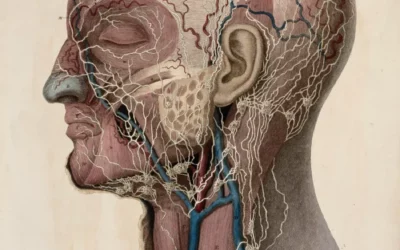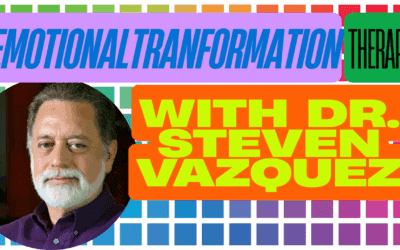What is NARM Therapy?
The Neuro-Affective Relational Model (NARM) is an advanced therapeutic approach designed to address developmental trauma and attachment issues. NARM integrates top-down (cognitive) and bottom-up (somatic) interventions to work with the link between psychological issues and the body. This innovative model focuses on the connections between our biological and psychological development, emphasizing the importance of early life experiences in shaping our adult selves.
Is NARM Therapy Evidence-Based?
While NARM is a relatively new therapeutic approach, it is grounded in well-established psychological theories and neuroscientific research. The model draws from attachment theory, psychodynamic principles, and somatic experiencing, all of which have substantial evidence bases. However, as with many complex psychotherapeutic approaches, large-scale randomized controlled trials specifically on NARM are limited. Current evidence for NARM’s effectiveness comes primarily from case studies, clinical observations, and the positive outcomes reported by practitioners and clients.
Who Developed NARM Therapy?
NARM was developed by Dr. Laurence Heller, a renowned psychologist and trauma specialist. Dr. Heller’s journey to creating NARM began in the 1970s when he started exploring various therapeutic approaches to address complex trauma and developmental issues.
Dr. Laurence Heller’s Biography
Dr. Heller received his Ph.D. in Psychology from the International University in San Diego. His early career was marked by a deep interest in humanistic and existential psychology. He trained in Gestalt Therapy and was significantly influenced by the work of Fritz Perls. In the 1980s, Dr. Heller became interested in body-oriented approaches to therapy, which led him to study Bioenergetic Analysis with Alexander Lowen.
The Birth of NARM
The development of NARM was a result of Dr. Heller’s extensive clinical experience and his recognition of the limitations in existing therapeutic models when dealing with developmental trauma. He observed that many of his clients struggled with issues that seemed to stem from early life experiences, yet traditional talk therapy often fell short in addressing these deep-rooted problems.
Dr. Heller’s breakthrough came when he began integrating his knowledge of somatic therapies with attachment theory and modern neuroscience. He realized that to effectively treat developmental trauma, a model needed to address both the psychological and physiological aspects of a person’s experience.
What Are the Core Assumptions and Tenets of NARM Therapy?
NARM is built upon several key principles that guide its approach to healing developmental trauma:
- Connection between early life experiences and adult functioning: NARM recognizes that our early relationships and experiences profoundly shape our nervous system, affecting our ability to connect with ourselves and others in adulthood.
- Importance of self-regulation: The model emphasizes the development of self-regulation skills as crucial for healing and growth.
- Integration of top-down and bottom-up processing: NARM combines cognitive understanding with somatic awareness to create a comprehensive healing approach.
- Focus on present-moment experience: While acknowledging the impact of past experiences, NARM primarily works with how past patterns manifest in the present.
- Emphasis on connection and attunement: The therapeutic relationship is seen as a vital component of healing, with the therapist’s attunement to the client’s moment-to-moment experience being crucial.
- Recognition of adaptive survival styles: NARM identifies five adaptive survival styles that develop in response to developmental trauma and works to help clients move beyond these limiting patterns.
How Does NARM Conceptualize Trauma, the Unconscious, and Identity?
Trauma in NARM
NARM views trauma, particularly developmental trauma, as a disruption in the natural process of human development. This disruption occurs when a child’s core needs for connection, attunement, trust, autonomy, and love are not adequately met. Unlike single-incident trauma, developmental trauma is cumulative and relational, shaping the individual’s nervous system and their way of relating to themselves and the world.
The Unconscious in NARM
NARM acknowledges the role of the unconscious but focuses more on bringing awareness to present-moment experiences and patterns. It views unconscious processes as manifesting in bodily sensations, emotions, and relational patterns that can be observed and worked with in the therapeutic setting.
Identity and Self in NARM
NARM conceptualizes identity as a complex interplay between our core self and the adaptive strategies we’ve developed in response to our environment. The model posits that developmental trauma can lead to a disconnection from our authentic self, resulting in the formation of a ‘survival self.’ The goal of NARM therapy is to help individuals reconnect with their core self and develop a more integrated, authentic sense of identity.
What Are NARM’s Interventions and Techniques?
NARM employs a variety of interventions and techniques to address developmental trauma:
1. Mindful Awareness
NARM therapists guide clients in developing mindful awareness of their present-moment experiences, including bodily sensations, emotions, and thoughts. This technique helps clients become more attuned to their internal states and patterns.
2. Somatic Tracking
This technique involves helping clients track physical sensations in their body as they discuss or process emotional material. Somatic tracking aids in integrating cognitive and bodily experiences.
3. Titration
Titration involves carefully and gradually approaching traumatic material to avoid overwhelming the client’s nervous system. This technique helps clients build capacity to tolerate and process difficult emotions and memories.
4. Pendulation
This technique involves alternating between focusing on challenging material and resource states. It helps clients develop greater flexibility and resilience in their nervous system.
5. Inquiry
NARM therapists use specific forms of inquiry to help clients explore their experiences and patterns. These questions are designed to increase self-awareness and promote insight.
6. Resource Building
This involves helping clients identify and strengthen internal and external resources that support their healing and growth.
7. Working with Survival Styles
NARM identifies five survival styles: Connection, Attunement, Trust, Autonomy, and Love-Sexuality. Therapists work with clients to recognize how these styles manifest in their lives and to develop more flexible, adaptive responses.
8. Relational Work
The therapeutic relationship itself is used as a tool for healing. NARM therapists pay close attention to the relational dynamics in therapy, using them to illuminate and work with the client’s relational patterns.
9. Nervous System Regulation
Techniques are employed to help clients develop greater capacity for nervous system regulation, moving from states of hyper- or hypo-arousal to a more balanced state.
10. Integration of Top-Down and Bottom-Up Processing
NARM therapists skillfully weave between cognitive understanding and somatic awareness, helping clients integrate these different levels of experience.
What Are the Goals and Stages of Treatment in NARM?
The overarching goal of NARM therapy is to help individuals heal from developmental trauma and reconnect with their authentic self. This process involves several key objectives:
- Increasing self-awareness and mindfulness
- Developing greater capacity for self-regulation
- Resolving shame and self-blame
- Improving relational skills and the ability to form secure attachments
- Reconnecting with one’s core self and authentic needs and desires
The stages of treatment in NARM are not rigidly defined, as the therapy is tailored to each individual’s needs. However, a general progression might include:
- Stabilization and Resource Building: Establishing safety and helping the client develop resources for self-regulation.
- Exploration of Survival Styles: Identifying and exploring the client’s adaptive survival styles.
- Working Through Core Issues: Addressing the underlying developmental wounds and unmet needs.
- Integration and Growth: Helping the client integrate new insights and experiences, fostering greater authenticity and aliveness.
- Consolidation and Termination: Reinforcing gains and preparing for the end of therapy.
In What Contexts is NARM Usually Practiced?
NARM is primarily practiced in outpatient mental health settings, including private practice, community mental health centers, and specialized trauma treatment programs. It can be applied in both individual and group therapy formats. NARM is particularly well-suited for working with adults who have experienced complex trauma, attachment disruptions, or who struggle with chronic anxiety, depression, or relational difficulties.
The model has also been adapted for use in various specialized contexts, including:
- Substance abuse treatment programs
- Eating disorder clinics
- Domestic violence recovery programs
- Veterans’ mental health services
- Chronic pain management clinics
Additionally, some NARM practitioners integrate elements of the approach into other therapeutic modalities or use it as part of a more comprehensive treatment plan.
What is Unique and Different About NARM Therapy?
Several aspects set NARM apart from other therapeutic approaches:
- Integration of Somatic and Psychological Approaches: While other models may incorporate body-based techniques, NARM’s seamless integration of top-down and bottom-up processing is distinctive.
- Focus on Developmental Trauma: NARM specifically addresses the impact of early life experiences on adult functioning, which is not always the primary focus in other trauma-oriented therapies.
- Emphasis on Present-Moment Experience: Unlike some trauma therapies that focus heavily on processing past events, NARM primarily works with how past patterns manifest in the present.
- Non-Pathologizing Approach: NARM views symptoms as adaptive responses rather than pathologies, fostering a compassionate and empowering therapeutic stance.
- Sophisticated Understanding of Survival Styles: The model’s detailed conceptualization of five adaptive survival styles provides a nuanced framework for understanding and working with complex relational patterns.
- Balance of Structure and Flexibility: NARM offers a clear theoretical framework while allowing for a flexible, client-centered approach to therapy.
How Does NARM Compare to Other Psychotherapy Models?
NARM shares similarities with and draws inspiration from several other psychotherapeutic approaches:
- Somatic Experiencing: Like NARM, Somatic Experiencing focuses on the body’s response to trauma. However, NARM places more emphasis on developmental trauma and relational patterns.
- Attachment-Based Therapies: NARM incorporates attachment theory but extends it by integrating somatic interventions and a focus on present-moment experience.
- Internal Family Systems (IFS): Both NARM and IFS work with different aspects of the self, but NARM’s approach is more grounded in developmental neurobiology.
- Sensorimotor Psychotherapy: Both models integrate cognitive and somatic approaches, but NARM has a more specific focus on developmental trauma and adaptive survival styles.
- Psychodynamic Therapies: NARM shares an interest in early life experiences and unconscious processes but places more emphasis on body-based interventions and present-moment awareness.
- Mindfulness-Based Therapies: Like mindfulness-based approaches, NARM emphasizes present-moment awareness, but it integrates this with a sophisticated understanding of developmental trauma.
- Polyvagal Theory: NARM incorporates insights from Polyvagal Theory in its understanding of nervous system regulation and relational dynamics.
What Cultural or Economic Forces Influenced NARM’s Development?
Several cultural and economic factors contributed to the development and growth of NARM:
- Increasing Recognition of Trauma’s Impact: The growing awareness of trauma’s pervasive effects on mental and physical health created a demand for more sophisticated trauma treatment models.
- Rise of Neuroscience: Advances in neuroscience, particularly in understanding the brain’s role in trauma and attachment, provided a scientific foundation for NARM’s approach.
- Holistic Health Movement: The increasing popularity of holistic and integrative approaches to health and wellness created a receptive environment for NARM’s mind-body integration.
- Limitations of Traditional Talk Therapy: Recognition of the limitations of purely cognitive approaches in treating complex trauma created an opening for more integrative models like NARM.
- Economic Pressures in Mental Health: The need for effective, relatively short-term interventions in mental health treatment aligned with NARM’s focused, present-oriented approach.
- Shift Towards Trauma-Informed Care: The growing emphasis on trauma-informed care in various health and social service sectors created opportunities for models like NARM to gain traction.
Timeline of NARM’s Development and Dissemination
- 1970s-1980s: Dr. Laurence Heller begins his exploration of various therapeutic approaches, including Gestalt Therapy and Bioenergetic Analysis.
- 1990s: Dr. Heller starts integrating his knowledge of somatic therapies with attachment theory and neuroscience.
- Early 2000s: The foundational concepts of NARM begin to take shape as Dr. Heller refines his approach through clinical practice.
- 2012: Publication of “Healing Developmental Trauma: How Early Trauma Affects Self-Regulation, Self-Image, and the Capacity for Relationship” by Laurence Heller and Aline LaPierre, introducing NARM to a wider audience.
- 2013-2015: NARM training programs begin to be offered, first in the United States and then internationally.
- 2016: The NARM Training Institute is established to formalize and expand NARM training and certification.
- 2017-2019: NARM gains increasing recognition in the trauma therapy field, with presentations at major conferences and workshops worldwide.
- 2020-Present: NARM adapts to the COVID-19 pandemic by offering online training and expanding its reach globally. Research on NARM’s effectiveness begins to emerge.
Is NARM Evidence-Based?
While NARM is grounded in established psychological theories and neuroscientific research, large-scale empirical studies specifically on NARM are still limited. The current evidence base for NARM includes:
- Case Studies: Numerous case studies have documented positive outcomes for clients treated with NARM.
- Clinical Observations: Experienced NARM practitioners report significant improvements in their clients’ well-being and functioning.
- Theoretical Foundation: NARM’s theoretical underpinnings are supported by research in attachment theory, neurobiology, and trauma studies.
- Ongoing Research: Several studies are currently underway to evaluate NARM’s effectiveness in various clinical populations.
It’s important to note that the complexity of NARM and its individualized approach makes it challenging to study using traditional randomized controlled trial methodologies. However, this is a common challenge for many psychotherapeutic approaches, particularly those dealing with complex trauma.
How Might NARM be Integrated into Modern Therapeutic Practice?
NARM offers several valuable concepts and techniques that modern therapists could integrate into their existing practices:
- Somatic Awareness: Incorporating body-based awareness and interventions can enhance the effectiveness of various therapeutic approaches.
- Developmental Perspective: NARM’s understanding of how early experiences shape adult functioning can inform case conceptualization and treatment planning across modalities.
- Present-Moment Focus: The emphasis on working with present-moment experiences can be valuable in many therapeutic contexts.
- Non-Pathologizing Stance: NARM’s view of symptoms as adaptive responses can foster a more compassionate and empowering therapeutic relationship.
- Integration of Top-Down and Bottom-Up Processing: This balanced approach can be beneficial in treating a wide range of psychological issues.
- Survival Style Framework: Understanding and working with adaptive survival styles can provide valuable insights in various therapeutic contexts.
By selectively integrating these elements, therapists can enhance their existing practices and offer more comprehensive care to their clients, particularly those dealing with complex trauma and developmental issues.
Bibliography and Further Reading
-
- Heller, L., & LaPierre, A. (2012). Healing Developmental Trauma: How Early Trauma Affects Self-Regulation, Self-Image, and the Capacity for Relationship. North Atlantic Books.
- Schore, A. N. (2003). Affect Regulation and the Repair of the Self. W. W. Norton & Company.
- Siegel, D. J. (2012). The Developing Mind: How Relationships and the Brain Interact to Shape Who We Are. Guilford Press.
- van der Kolk, B. (2014). The Body Keeps the Score: Brain, Mind, and Body in the Healing of Trauma. Viking.
- Levine, P. A. (2010). In an Unspoken Voice: How the Body Releases Trauma and Restores Goodness. North Atlantic Books.
- Porges, S. W. (2011). The Polyvagal Theory: Neurophysiological Foundations of Emotions, Attachment, Communication, and Self-regulation. W. W. Norton & Company.
- Ogden,
- Ogden, P., Minton, K., & Pain, C. (2006). Trauma and the Body: A Sensorimotor Approach to Psychotherapy. W. W. Norton & Company.
- Cozolino, L. (2014). The Neuroscience of Human Relationships: Attachment and the Developing Social Brain. W. W. Norton & Company.
- Fisher, J. (2017). Healing the Fragmented Selves of Trauma Survivors: Overcoming Internal Self-Alienation. Routledge.
- Fosha, D., Siegel, D. J., & Solomon, M. (Eds.). (2009). The Healing Power of Emotion: Affective Neuroscience, Development & Clinical Practice. W. W. Norton & Company.
- Schore, A. N. (2019). Right Brain Psychotherapy. W. W. Norton & Company.
- Rothschild, B. (2000). The Body Remembers: The Psychophysiology of Trauma and Trauma Treatment. W. W. Norton & Company.
- Badenoch, B. (2008). Being a Brain-Wise Therapist: A Practical Guide to Interpersonal Neurobiology. W. W. Norton & Company.
- Levine, P. A. (1997). Waking the Tiger: Healing Trauma. North Atlantic Books.
- Siegel, D. J. (2010). Mindsight: The New Science of Personal Transformation. Bantam.
- Dana, D. (2018). The Polyvagal Theory in Therapy: Engaging the Rhythm of Regulation. W. W. Norton & Company.
- Lanius, R. A., Vermetten, E., & Pain, C. (Eds.). (2010). The Impact of Early Life Trauma on Health and Disease: The Hidden Epidemic. Cambridge University Press.
- Porges, S. W. (2017). The Pocket Guide to the Polyvagal Theory: The Transformative Power of Feeling Safe. W. W. Norton & Company.
- Heller, L. (2019). The Neuro-Affective Relational Model (NARM) for Healing Attachment, Developmental, and Shock Trauma. In Treating Complex Traumatic Stress Disorders in Adults: Scientific Foundations and Therapeutic Models (2nd ed., pp. 529-550). Guilford Press.
- LaPierre, A. (2015). Relational Body Psychotherapy (Or Relational Somatic Psychology). International Body Psychotherapy Journal, 14(2), 80-100.


























0 Comments